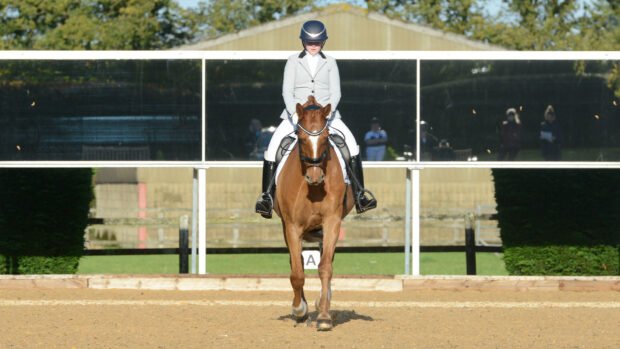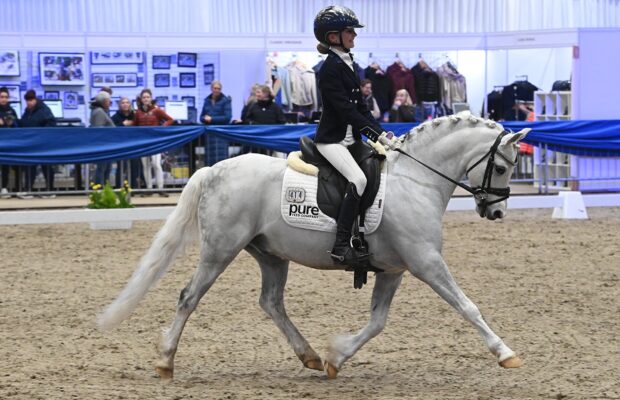Swedish Olympic event rider Ludwig Svennerstål explains how shoulder-in on a circle encourages self-carriage
Aim
Shoulder-in on a circle is something I do every day, whether I’m warming up to jump or do dressage, as it shows me if the horse is on the aids and helps me ride from the inside leg to the outside rein.
The aim is for the horse to be in self-carriage and in front of the leg. If you discover that he is behind the leg and his head is behind the vertical, make sure that your contact is consistent and equal — check you are not using too much inside rein and make sure you use the inside leg to encourage the horse to think “up” and forward.
Transitions are like changing gear on a car: if you go down a gear you don’t want to stop the horse in his tracks, but for him to gather himself and push forward into the new gear. Shoulder-in on a circle really helps with this.
When you go up a pace, make sure the horse goes into the new pace in a positive and active manner. Once he is forward then you can create collection by using your inside leg.
The exercise
1. Start on a 20-metre circle in walk and do a couple of steps of shoulder-in. Once that is established, proceed to trot and canter. Remember it is a simple exercise and you should ride from your inside leg to your outside rein. With new horses, I sometimes spend weeks on this first step to teach them to do it correctly.
2. Make small transitions of tempo within the pace. Create more angle in the shoulder-in and keep your leg on to achieve a smaller trot — avoid the mistake of taking the leg off and using too much rein.
3. Make transitions to different paces while doing the exercise. When going down a pace, use a bigger angle in the shoulder-in, keep your leg on, use your seat and “think” the transition to get the horse to change to the slower pace. Stay patient, as sometimes it takes 20 circles before the horse understands what you want him to do.
4. Go large around the arena, keeping the principles of the exercise in mind. If you have done the exercise correctly, the horse will be in self-carriage, on the aids and directed by a light touch of the outside rein.
Article continues below…
You might also be interested in:

#SundaySchool: Dan Greenwood on improving suppleness (after lockdown lifts)
The grand prix dressage rider discusses using turn on the forehand to improve suppleness and refine the horse’s understanding of

#SundaySchool: Laura Tomlinson — how to develop your horse’s self-carriage (after lockdown lifts)
Olympic dressage rider Laura Tomlinson explains how to improve a horse’s self-carriage and what it means to do so

Subscribe to Horse & Hound magazine today – and enjoy unlimited website access all year round
Tips and pitfalls
- The biggest downfall for most riders is a lack of patience. Repetition and composure are essential.
- Resist the temptation to pull on the inside rein to create the angle of the shoulder-in. It will only lead to an over-bent neck with too much bend to the inside, and a head which is behind the vertical.
- Don’t sit and nag the horse with your inside leg. If the horse doesn’t listen to your aids, give it a “Pony Club kick” and then keep the leg still. The horse needs to accept your aids, but you must be clear and consistent with them.
- You should usually aim to keep the contact in both reins constant and consistent, but in this exercise, rein contact needs to be stronger on the outside than on the inside.
- Remember to pat and reward the horse whenever he does something correctly or improves his way of doing something.
We continue to publish Horse & Hound magazine weekly during the coronavirus pandemic, as well as keeping horseandhound.co.uk up to date with all the breaking news, features and more. Click here for info about magazine subscriptions (six issues for £6) and access to our premium H&H Plus content online.




